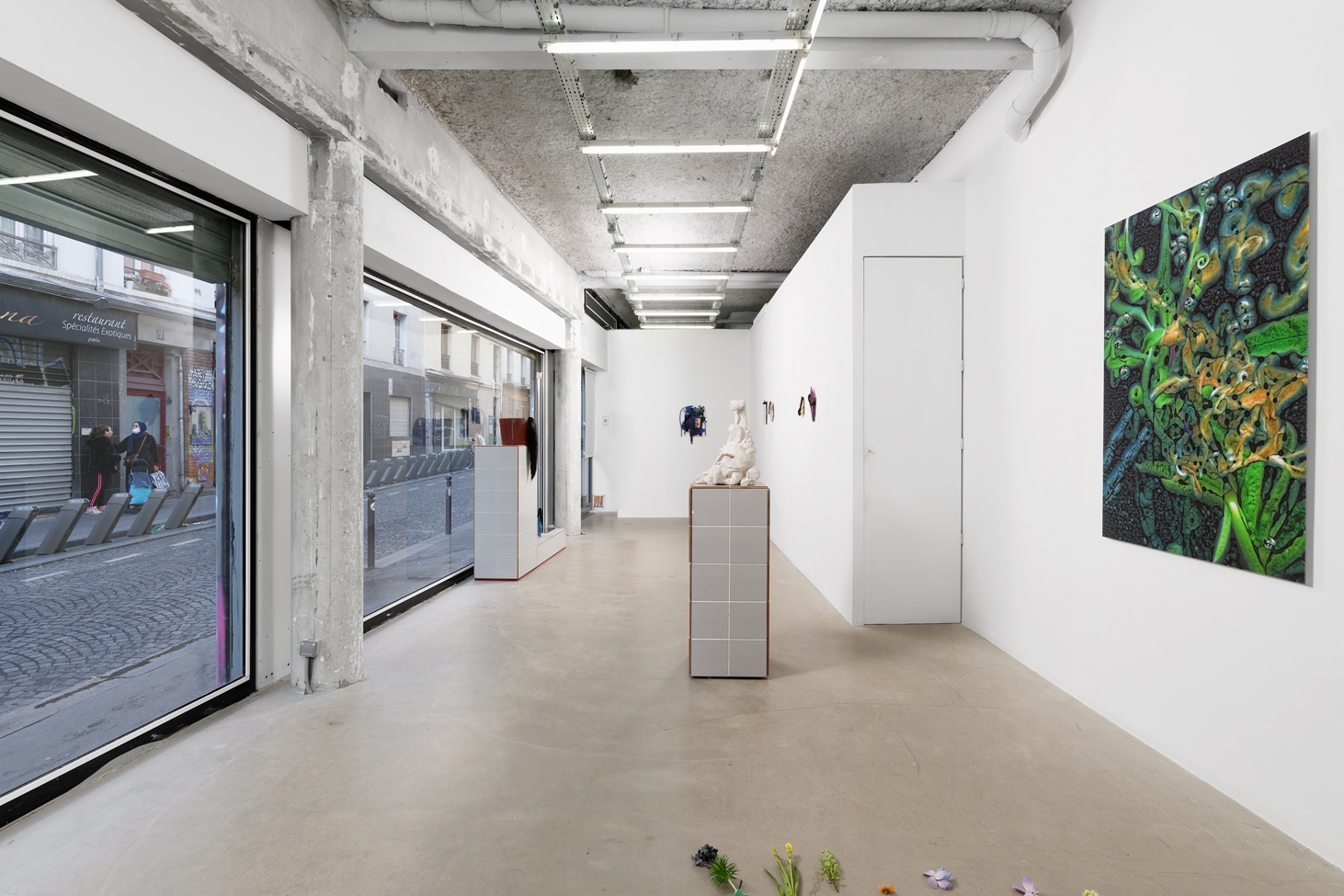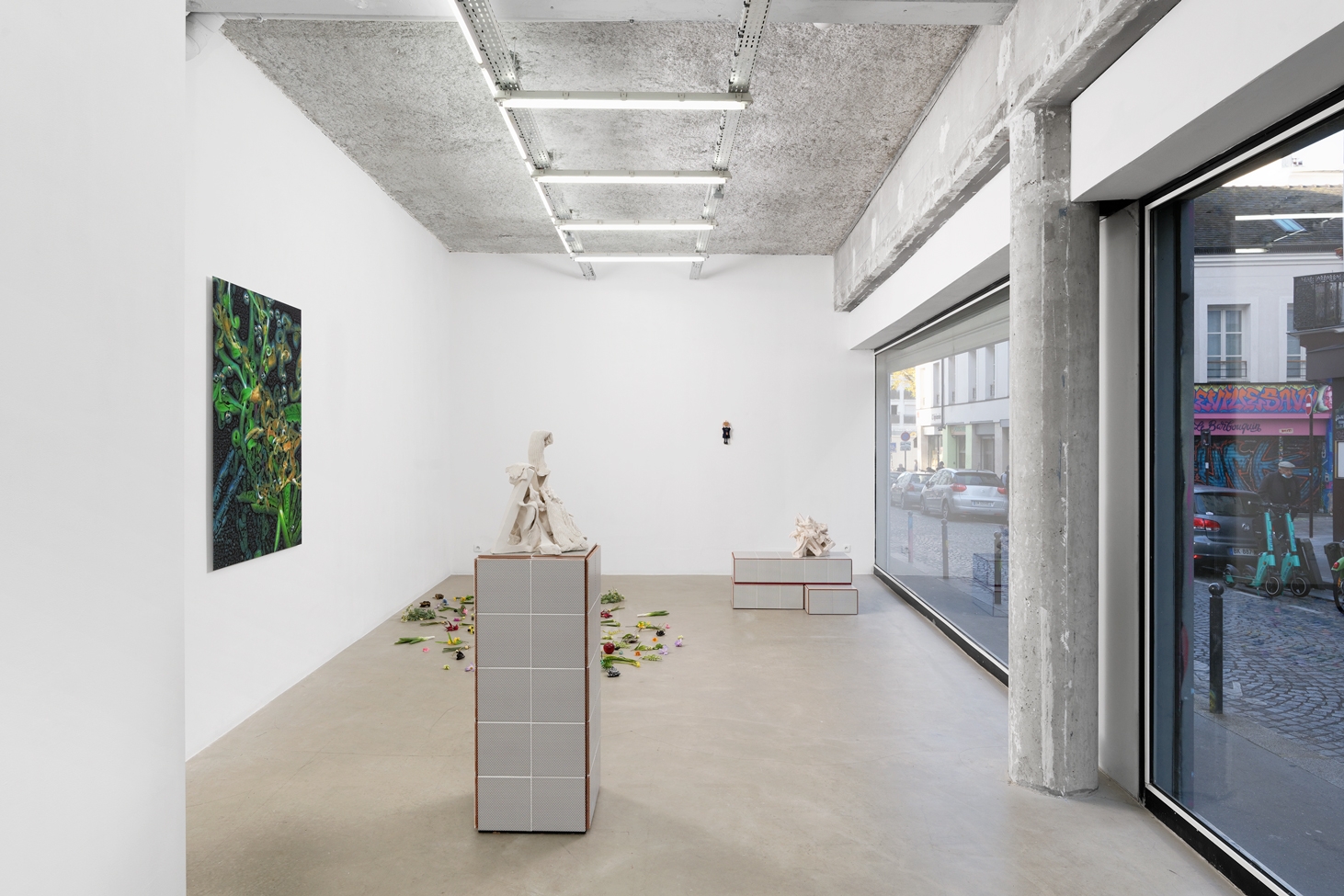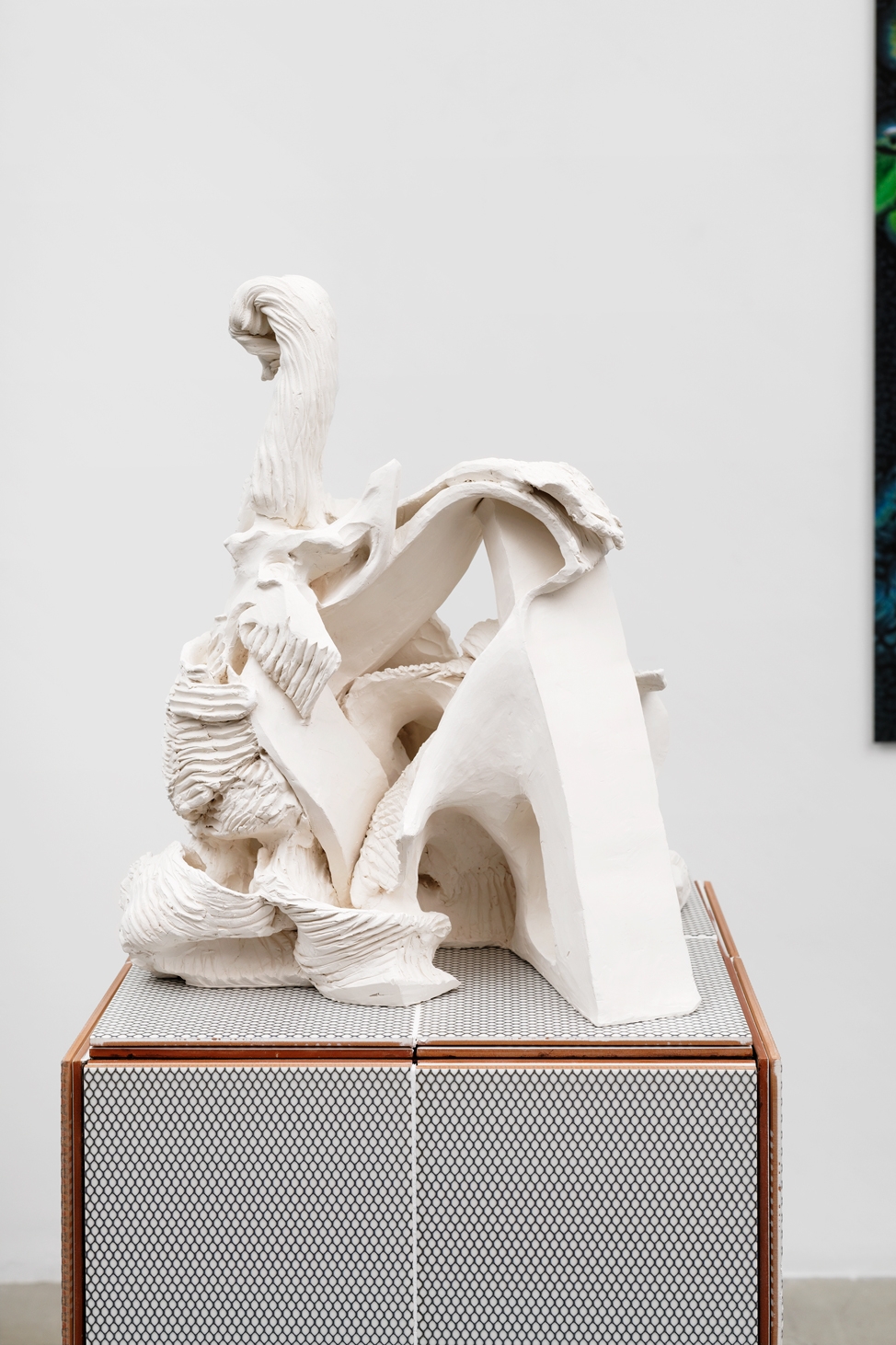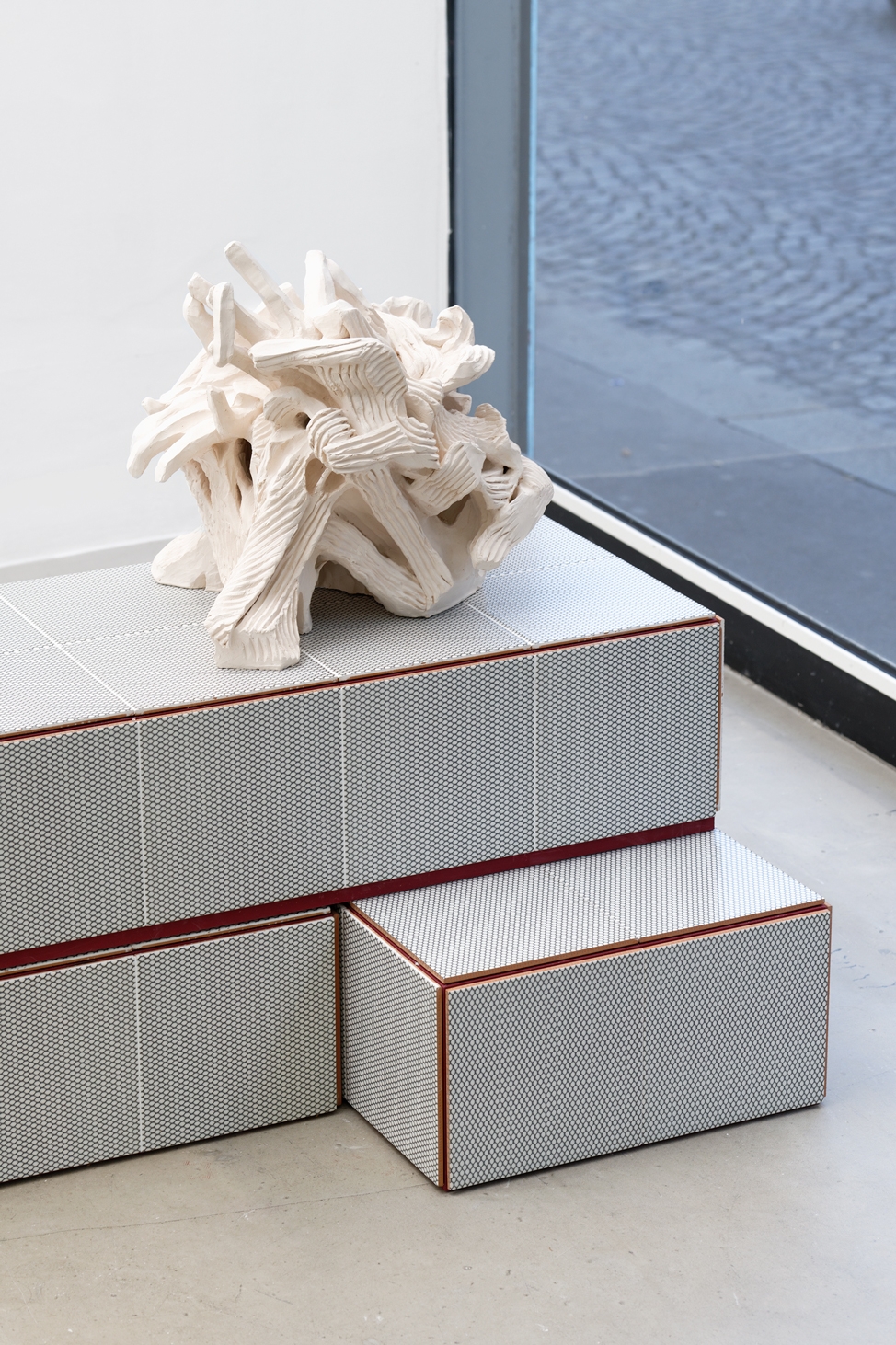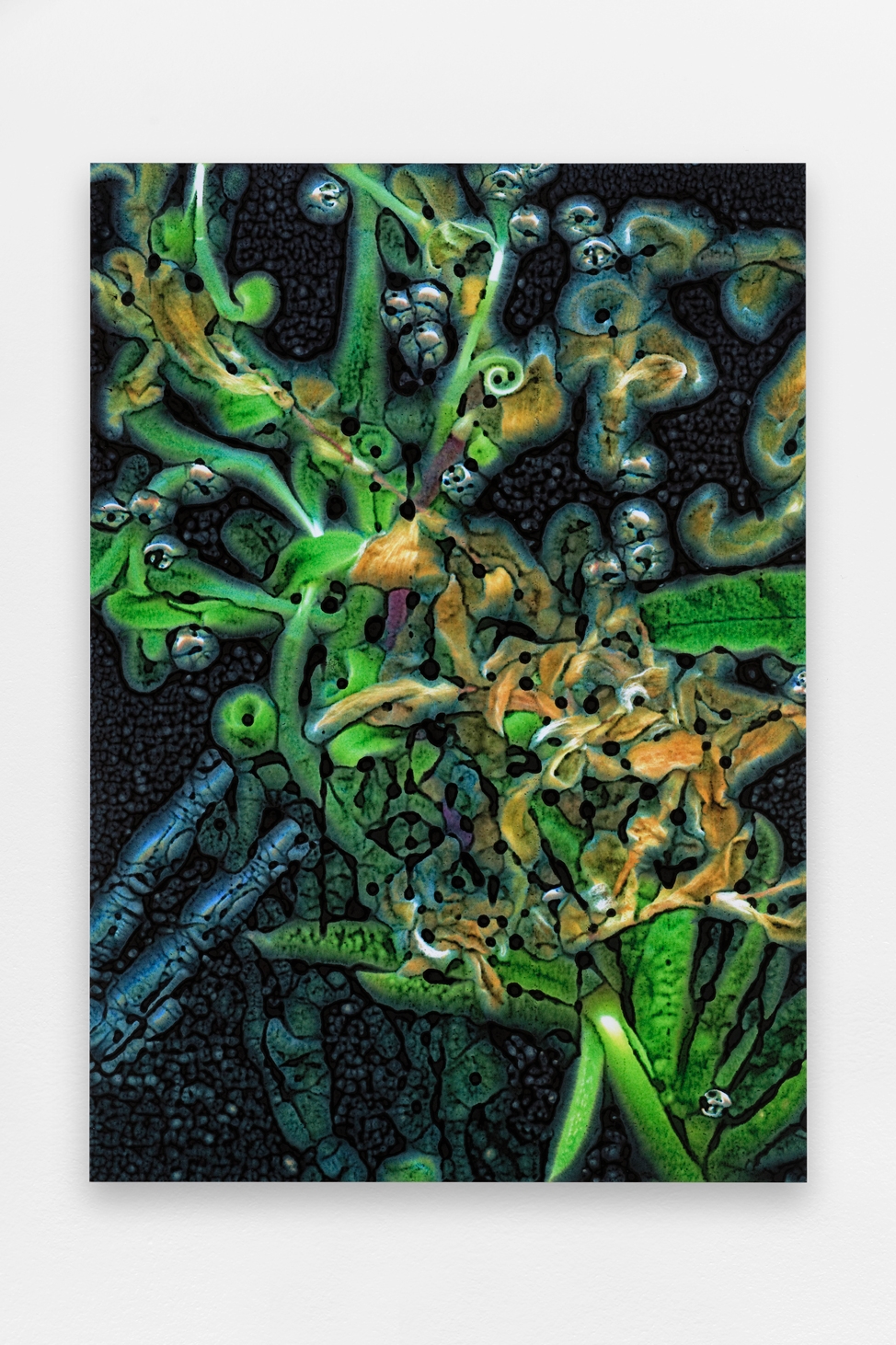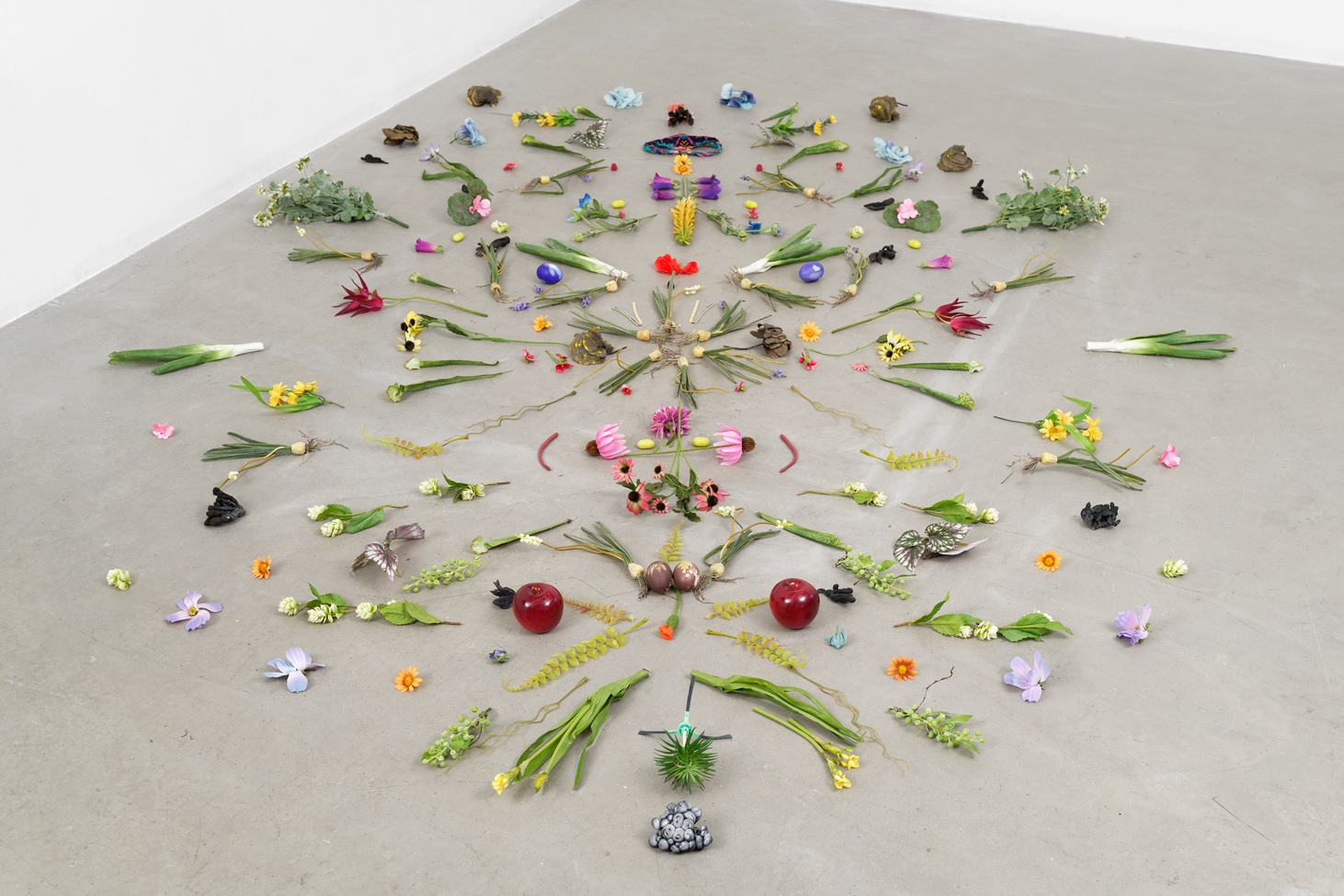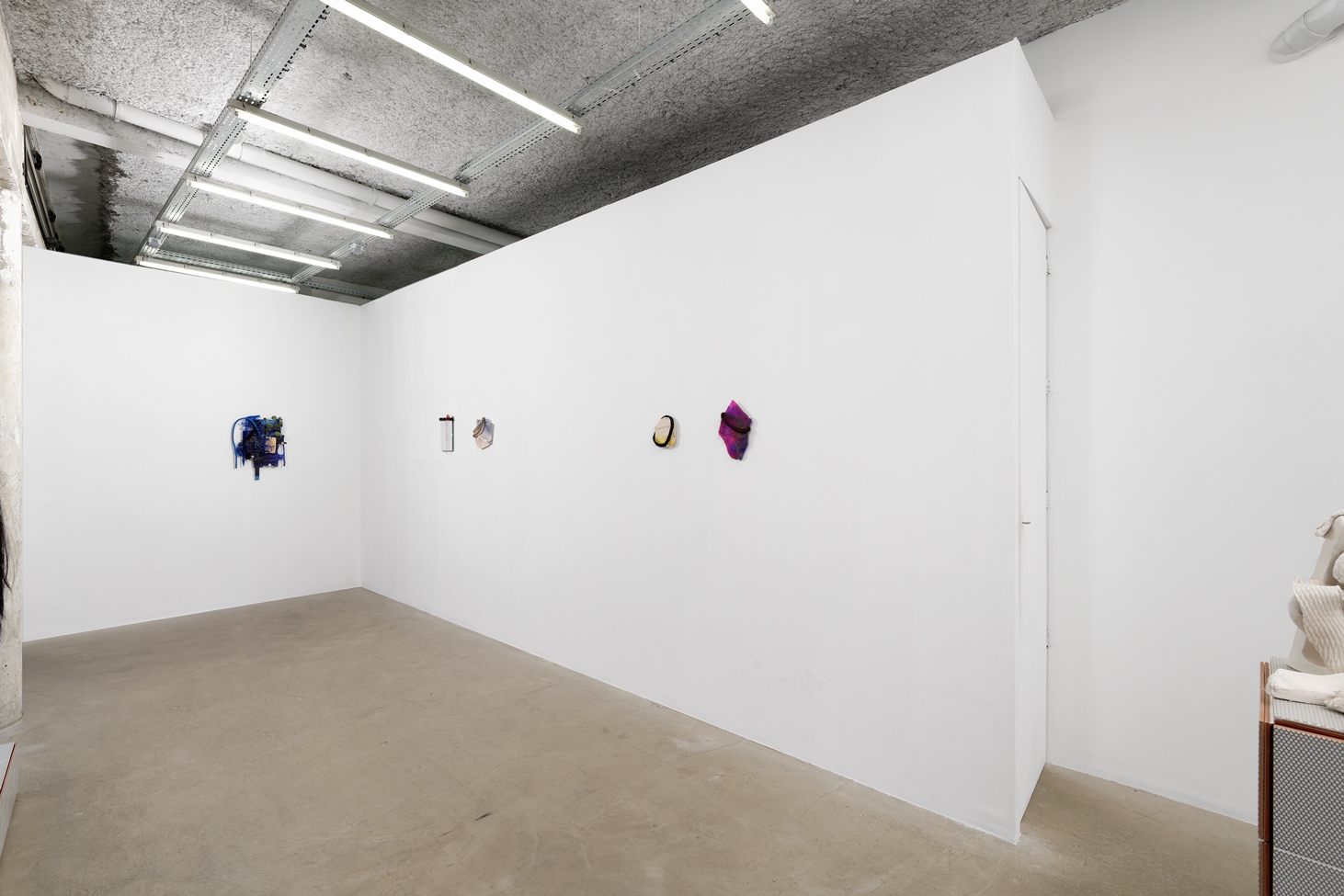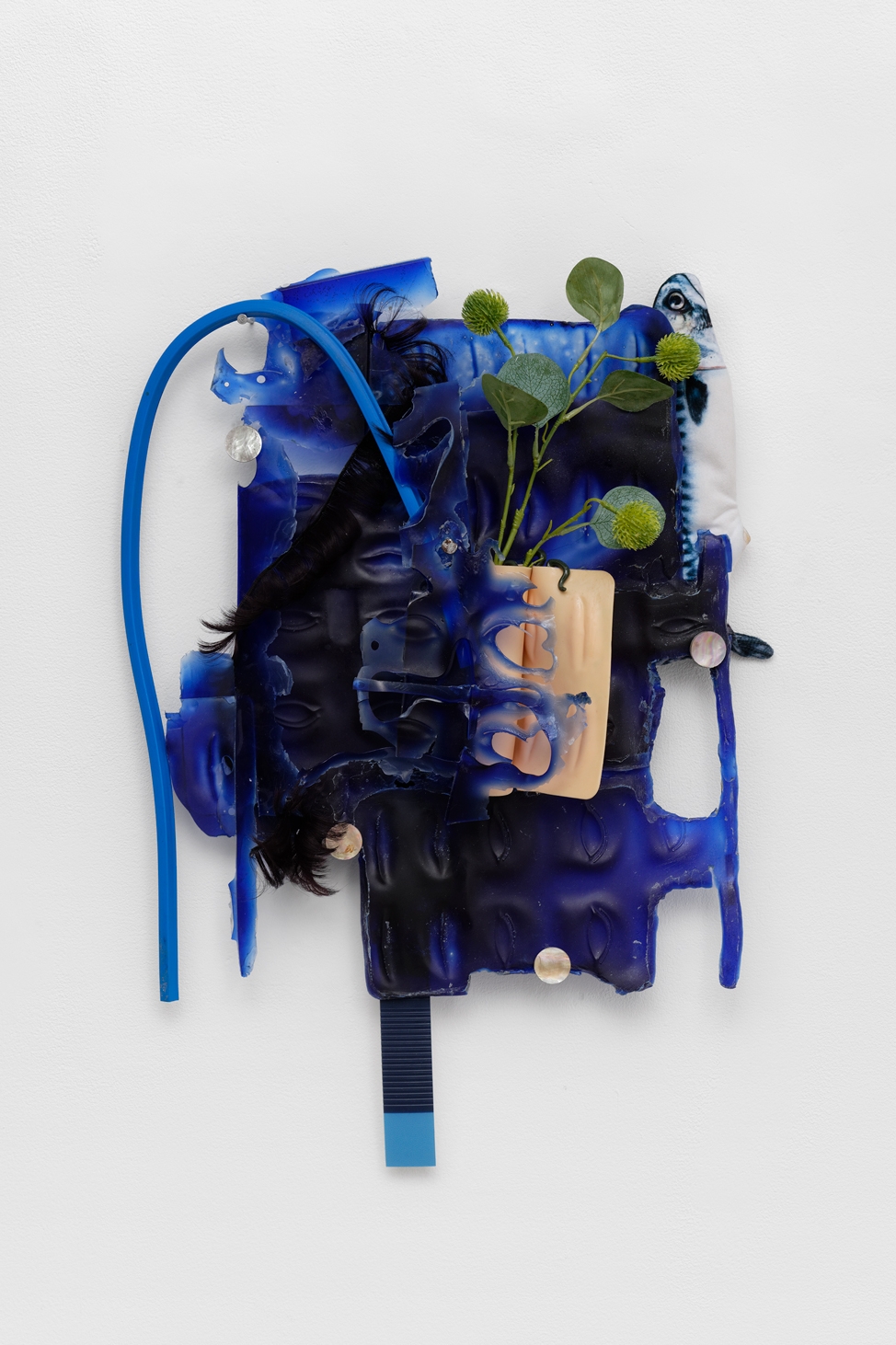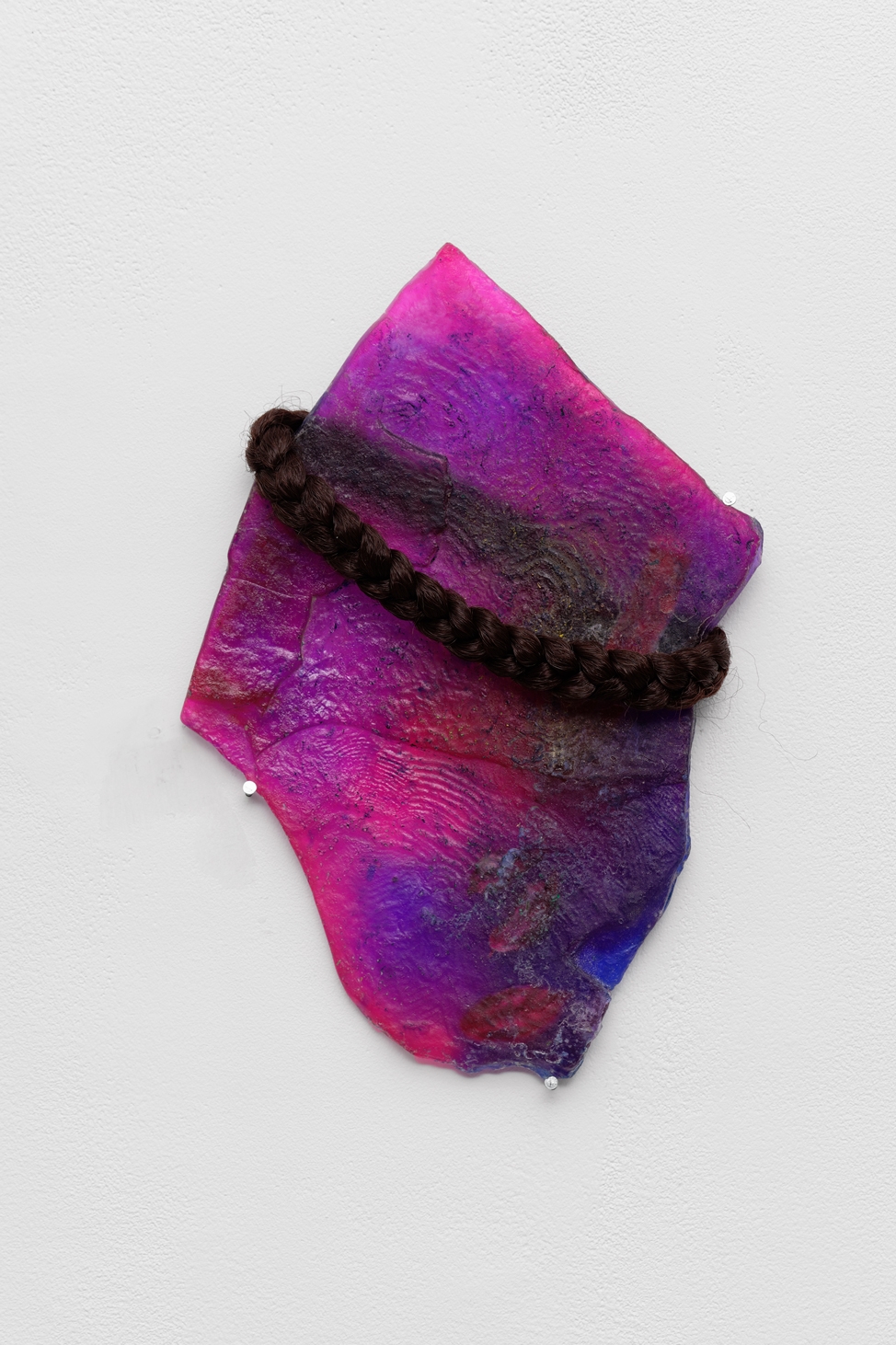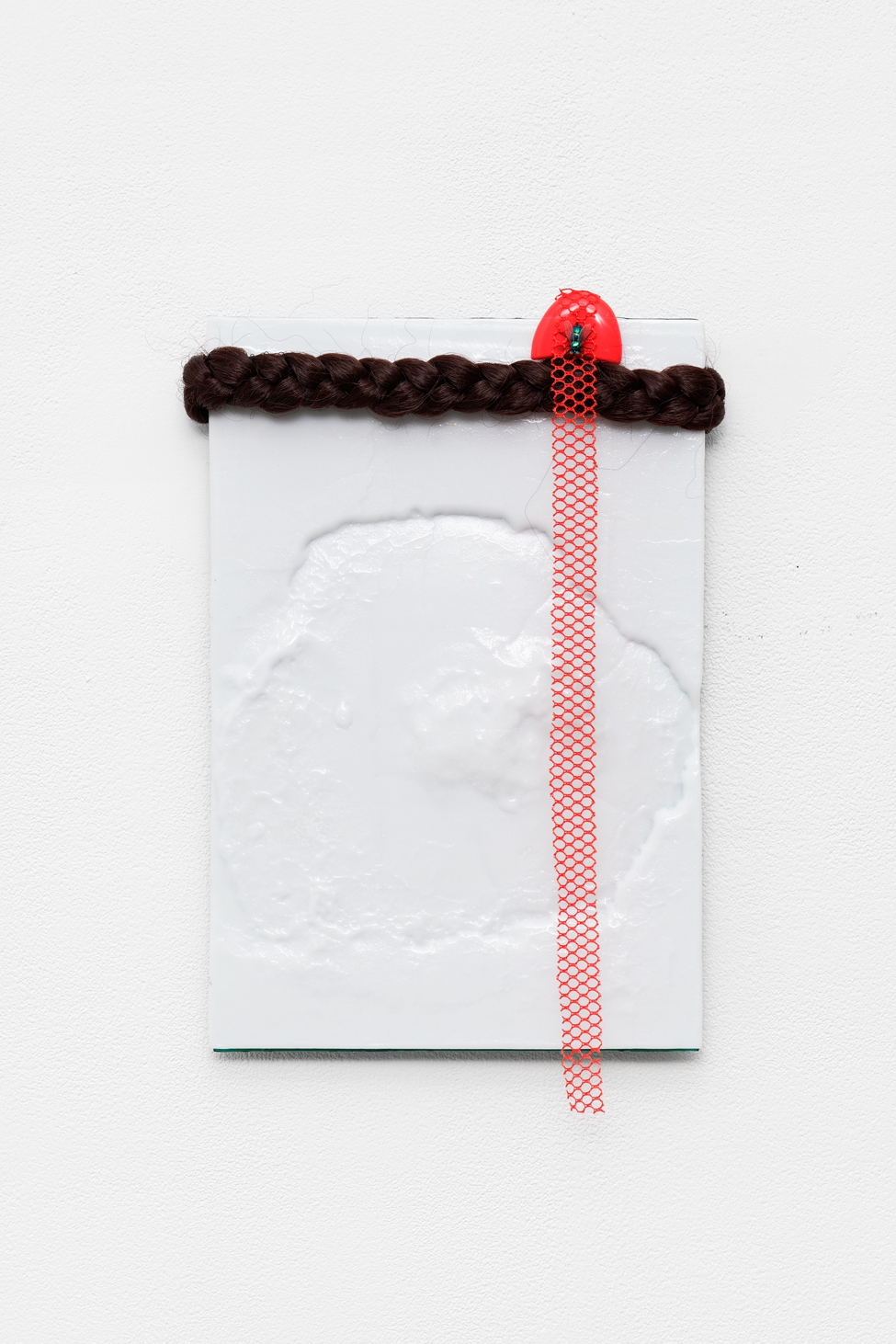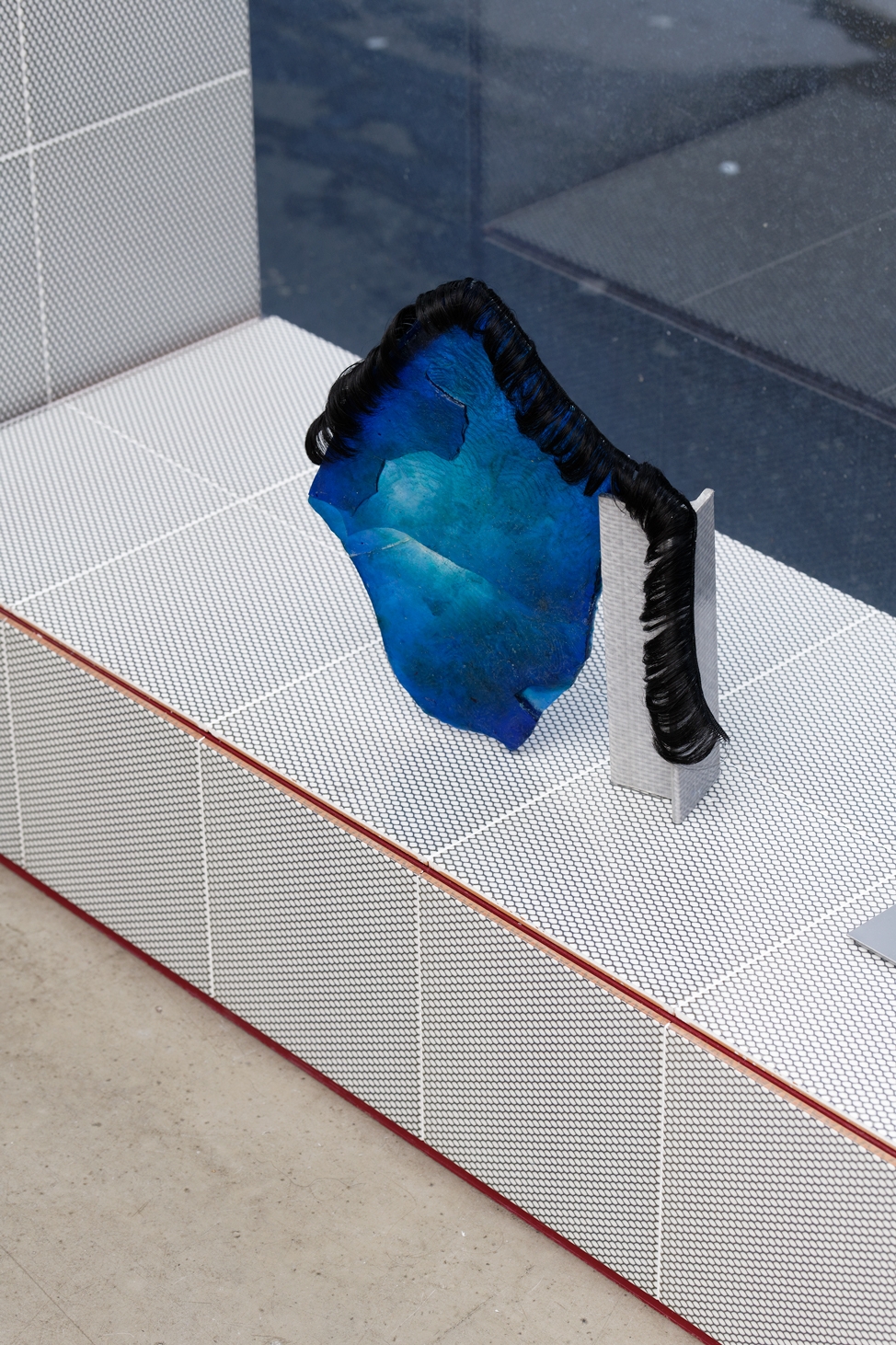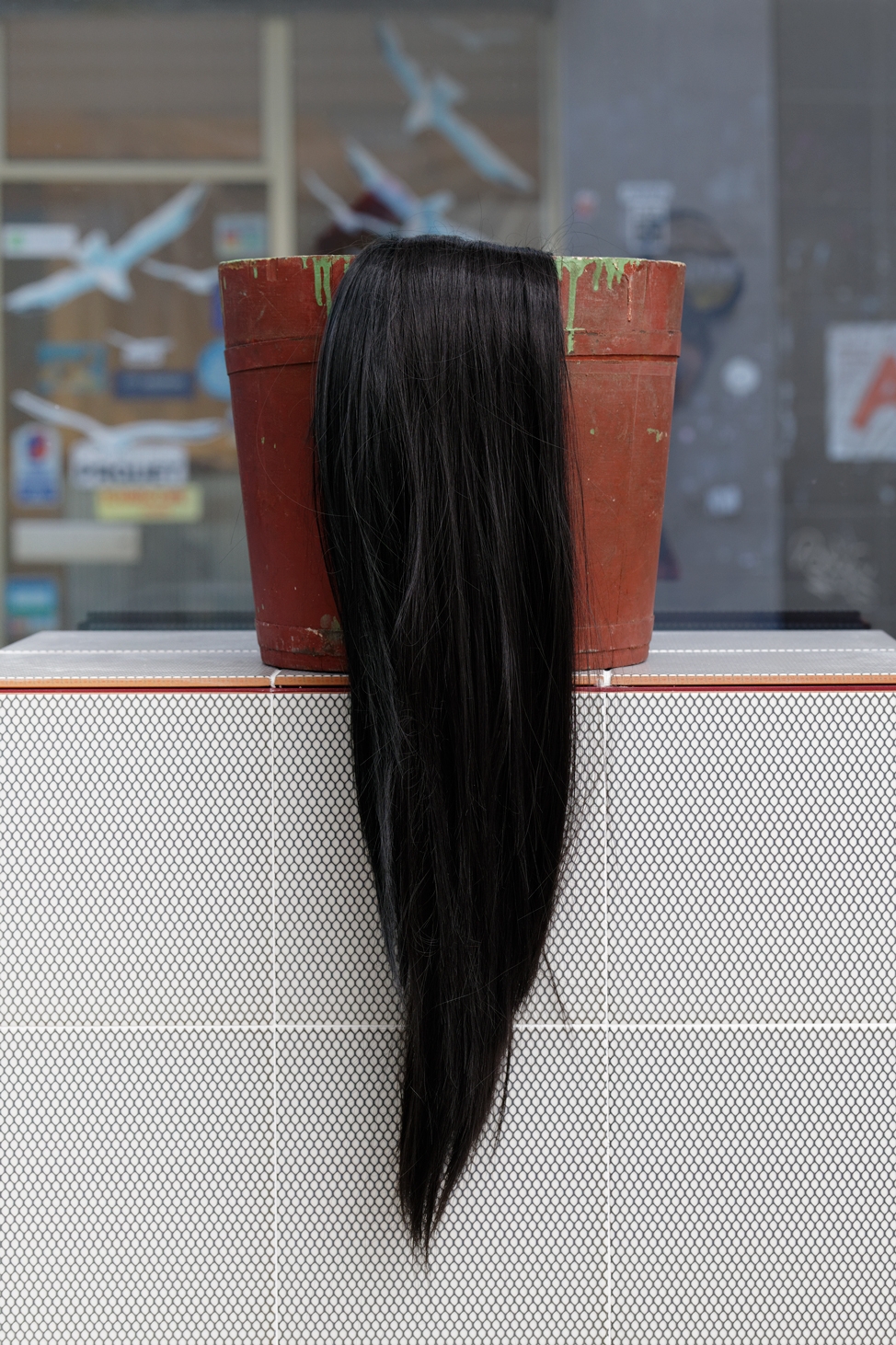Bettina Samson
Supporting Characters
Sometimes all it takes is one detail for an object to slip into the realm of the uncanny. The works gathered by Bettina Samson for her new exhibition at Sultana are the result of these subversions of the real. They are made of scraps, tests and anonymous detritus. As the production progresses, these elements impose themselves on the artist as characters in their own right. They become presences that claim their own autonomy.
The anonymity that characterises these sculptures evokes the history of the women who joined the Shaker movement in the United States in 1839. Many of them were remarkable draughtswomen who were responsible for the formal transcription of revelations and visions experienced during moments of trance and mystical ecstasy. Both their names and their intimacy were forcibly erased by the puritanism and austerity of the movement. Thus, the hair braids found in some of the pieces in the exhibition, Une #I, Une #II, Une #III, etc., appeal to the intimacy of these rebellious young women who flew away from the family nest to join a community based on celibacy, the abandonment of marriage and property, and radical gender equality. The braids can also be read as gestures of insubordination to the refusal of all forms of ornamentation and decoration that animated the movement and, more generally, the modernist aesthetic of which the Shakers were important precursors thanks to the development of an extremely refined design and an affirmed architectural minimalism. Bettina Samson uses this type of ornament as a material that is both subversive and disturbing in its symbolic relationship to death and relics.
Found detritus, experimentation and chance are all fundamental elements in Bettina Samson's work. Accident is an integral part of her creative process and her pieces are often the result of an unintentional gesture. Some of the works presented in the exhibition are made of ceramic, a material that the artist deliberately approaches from a non-specialist's point of view. She plays with the chance of the material and the unforeseen events that can occur during the firing phase. Two ceramic sculptures placed on tiled bases with a mesh pattern, Mesh Sculpture #I and #II, occupy the center of the space like small architectures standing on the border between the rational and the magical.
In the background, a lush plant landscape appears, Apocalypse as Aphrodisia: the result of a scanned plant composition printed on a water-repellent support, rescanned and enlarged to poster size. The close-up transforms the plant, infiltrated by anecdotal and prosaic objects, into an abundant landscape.
With her discreet gestures of reinterpretation and subversion, Bettina Samson blurs the boundaries between the living and the inert, the natural and the artificial by playing with the reversibility of points of view. Her supporting characters gradually take centre stage, they guide the viewer's gaze and end up becoming the protagonists.
Elena Cardin
♡
Bettina Samson
Personnages secondaires
Parfois il suffit d’un détail pour qu’un objet bascule vers le champ d’une inquiétante étrangeté. Les œuvres réunies par Bettina Samson pour sa nouvelle exposition à la galerie Sultana sont issues de ces détournements du réel, elles sont faites de chutes, d’essais et de scories anonymes. Au fur et à mesure du processus de production, ces éléments s’imposent à l’artiste comme des personnages à part entière, des présences qui réclament leur propre autonomie.
L’anonymat qui caractérise ces sculptures évoque l’histoire de ces femmes qui, dans les années 1839, se joignirent au mouvement des Shakers aux Etats-Unis. Beaucoup d’entre elles étaient des dessinatrices remarquables à qui l’on doit la re-transcription formelle de révélations et de visions eues pendant des moments de transe et d'extase mystique. Leur nom tout comme leur intimité étaient forcés à l’invisibilité par le puritanisme et l'austérité du mouvement. Ainsi, les tresses de cheveux qu’on retrouve dans certaines pièces de l’exposition, Une #I, Une #II, Une #III, etc., font appel à l’intimité de ces jeunes femmes rebelles qui s’envolèrent du nid familial pour rejoindre une communauté basée sur le célibat, l’abandon du mariage et de la propriété et l’égalité radicale des sexes. Ces éléments de coiffure peuvent aussi se lire comme autant de gestes d’insubordination au refus de toute forme d’ornementation et de décoration qui animait le mouvement et, plus généralement, l'esthétique moderniste dont les Shakers ont été des importants précurseurs grâce à l’élaboration d’un design extrêmement épuré et d’un minimalisme architectural affirmé. Bettina Samson se sert de ce type d’ornement comme d’un matériau à la fois subversif et inquiétant pour son rapport symbolique à la mort et à la relique.
La scorie, les expérimentations, le hasard sont tous des éléments fondamentaux dans l'œuvre de Bettina Samson. L’accident fait partie intégrante de son processus de création et ses pièces sont souvent issues d’un geste non intentionnel. Une partie des œuvres présentées dans l’exposition est réalisée en céramique, un matériau que l’artiste aborde délibérément d’un point de vue de non-spécialiste. Bettina Samson joue avec les aléas de la matière et les imprévus qui peuvent se produire pendant la phase de cuisson. Deux sculptures en céramique posées sur des socles carrelés au motif de résille, Mesh Sculpture #I et #II, occupent le centre de l’espace comme des petites architectures se tenant à la frontière du rationnel et du magique.
En arrière-plan apparaît un paysage végétal luxuriant, Apocalypse as Aphrodisia, le résultat du scanogramme d’une composition de plantes imprimé sur un support hydrofuge, rescanné et agrandi au format affiche. Le gros plan permet de transformer le végétal infiltré d'objets anecdotiques et prosaïques en un paysage foisonnant.
Avec ses gestes discrets de détournement, Bettina Samson brouille les frontières entre le vivant et l’inerte, le naturel et l’artificiel en jouant avec la réversibilité des points de vue. Ses personnages secondaires occupent petit à petit le devant de la scène, guident le regard du spectateur et finissent par devenir les principaux protagonistes.
Elena Cardin

